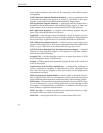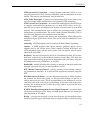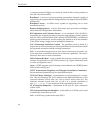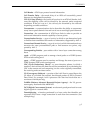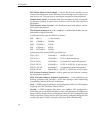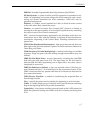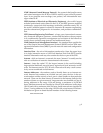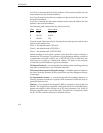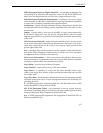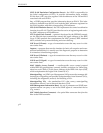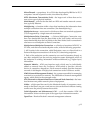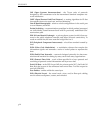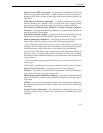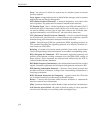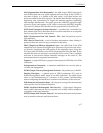
g-10
GLOSSARY
In a Class A network, the first of the numbers is the network number, the last
three numbers are the local host address.
In a Class B network, the first two numbers are the network, the last two are
the local host address.
In a Class C network, the first three numbers are the network address, the last
number is the local host address.
The following table summarizes the classes and sizes:
Class First # Max# Hosts
A 1-126 16,387,064
B 129-191 64,516
C 192-223 254
Network mask values are used to identify the network portion and the host
portion of the address. For:
Class A - the default mask is 255.0.0.0
Class B - the default mask is 255.255.0.0
Class C - the default mask is 255.255.255.0
Subnet masking is used when a portion of the host ID is used to identify a
subnetwork. For example, if a portion of a Class B network address is used for
a subnetwork, the mask could be set as 255.255.255.0. This would allow the
third byte to be used as a subnetwork address. All hosts on the network
would still use the IP address to get on the Internet.
IP (Internet Protocol) - a connectionless, best-effort packet switching protocol
that offers a common layer over dissimilar networks.
IPX Protocol (Internetwork Packet Exchange) - a NetWare protocol similar to
the Xerox Network Systems (XNS) protocol that provides datagram delivery
of messages.
IS (Intermediate system) - a system that provides forwarding functions or
relaying functions or both for a specific ATM connection. OAM cells may be
generated and received.
ISA Bus - a bus standard developed by IBM for expansion cards in the first
IBM PC. The original bus supported a data path only 8 bits wide. IBM subse-
quently developed a 16-bit version for its AT class computers. The 16-bit AT
ISA bus supports both 8- and 16-bit cards. The 8-bit bus is commonly called
the PC/XT bus, and the 16-bit bus is called the AT bus.



